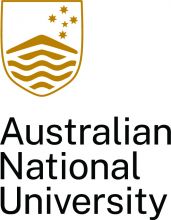A top-ranking Australian university will take less account of entrance scores when it selects students straight out of school, amid controversy over the country’s unique higher education admissions mechanism.
The Australian National University will introduce American-style “whole-person” tests and allow students to apply months in advance, in a move designed to boost its appeal across the country and reduce reliance on the Australian Tertiary Admissions Rank, which rates students’ suitability for university on a single national scale.
In a statement, vice-chancellor Brian Schmidt said that students were “more than just a score”. “We know they are passionate. We know they have unique skills. We know they gain experience through community service, volunteering, working part time, participating in school leadership and excelling in sports, gaming, performance, competitions and more,” he said.
“We also know that sometimes life pans out a bit differently for some students. Some have to work to support themselves, care for their family or face other challenges. These are all important life skills and we will consider these factors alongside their ATAR marks.”
The ATAR has courted criticism over perceptions that it skews school education, with students choosing subjects thought to deliver high marks rather than key skills and knowledge. Critics also say that it boosts their stress levels and is becoming increasingly irrelevant as more mature-aged people enter university.
ATAR supporters say that it is a good predictor of student success, and universities that abandon it will simply have to come up with alternative selection measures.
Marnie Hughes-Warrington, ANU’s deputy vice-chancellor, said that the new selection mechanism would consider traits such as community service, part-time work and sporting prowess alongside ATAR scores. She said that it would be introduced in 2020 to give current school students time to prepare for it.
Professor Hughes-Warrington said that the system would make life easier for school-leavers who often faced a “maze” of application forms, and had to wait until the “last minute” to find out what they would be studying and where they would be living. She said that the new application process would cover accommodation and scholarships as well as admission.
Final-year students will be able to apply to ANU as early as March and receive provisional offers in August, subject to meeting subject entry requirements after their final exams. “That means students will know they have a place at ANU much earlier, and can start planning for their life at university,” she said.
Andrew Norton, higher education programme director at the Grattan Institute thinktank, said that provisionally accepted students would still face some uncertainty. But he said that they could lodge traditional applications through tertiary admissions centres as a back-up.
Mr Norton said that about 20,000 people last year had applied both through these centres and directly to universities. He said that other institutions would take note of ANU’s initiative.
“It means lots more work preparing and assessing applications, so they will be reluctant to increase time and money costs for unclear benefits. But if school-leavers start bypassing the TACs in significant numbers to get early offers, other universities would have to respond,” Mr Norton said.
Mr Norton said the TACs would continue to play a role – at least for school-leavers – because they helped students maximise their chances of getting into their preferred courses while minimising the risks of missing out entirely.
Register to continue
Why register?
- Registration is free and only takes a moment
- Once registered, you can read 3 articles a month
- Sign up for our newsletter
Subscribe
Or subscribe for unlimited access to:
- Unlimited access to news, views, insights & reviews
- Digital editions
- Digital access to THE’s university and college rankings analysis
Already registered or a current subscriber?









